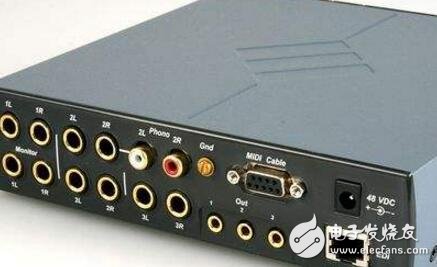Digital audio is a technology that uses digital methods to record, store, edit, compress, or play sound. It represents a new form of sound that has emerged with the development of digital signal processing, computer technology, and multimedia advancements. The primary applications of digital audio are in music production and post-production processes.
Computer data is stored using binary code—0s and 1s. Similarly, digital audio works by converting analog sound waves into binary data. This process involves sampling the audio signal at regular intervals and encoding it into a digital format. During playback, the binary data is converted back into an analog signal, which is then sent to speakers for output. Unlike traditional formats like tapes, radio, or TV, digital audio offers significant advantages: it’s easier to store, more cost-effective, and maintains high fidelity without distortion during storage or transmission. Additionally, it allows for flexible editing and manipulation.

**Digital Audio Interfaces:**
Common interfaces include I2S, PCM, and SPDIF.
- **I2S Interface**: This interface supports mono or stereo audio and uses PCM format. It comes in three variations: left-aligned, right-aligned, and standard I2S. It provides better timing performance than SPDIF and is ideal for short-distance communication.
- **PCM Interface**: Also known as the DSP mode, it is commonly used for mono or stereo audio but can theoretically support multi-channel audio as well. It also uses PCM format.
- **SPDIF Interface**: Short for Sony/Philips Digital Interface, it transmits digital audio over coaxial or optical cables. Optical cables offer better noise immunity. SPDIF can transmit PCM streams, as well as compressed surround sound formats like Dolby Digital and DTS, which are derived from PCM.
**Digital Audio Applications:**
While not as widespread as other technologies, digital audio has its own specialized domain, particularly in music recording and post-production. It allows audio files to be converted into unique digital data, which can then be played back by converting the data back into an analog signal. This method differs significantly from how sound is broadcast through traditional media like radio or television. Compared to these, digital audio offers benefits such as easy storage, low costs, no degradation during transmission, and convenient editing capabilities.

Understanding digital audio also involves learning key concepts such as sampling rate, compression ratio, bit rate, and quantization. A higher sampling rate generally results in better sound quality. The compression ratio refers to the file size before and after compression. Bit rate indicates the amount of data processed per second, which affects audio quality. These elements provide essential insights into how digital audio works. If you're interested in learning more about the fundamentals of digital audio, exploring further resources is highly recommended.

Pv Branch Connector,MC4 Y Type Connector,MC4 Branch,MC4 Branch Adapter
Sowell Electric CO., LTD. , https://www.sowellsolar.com